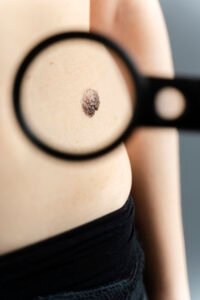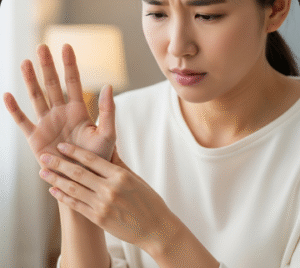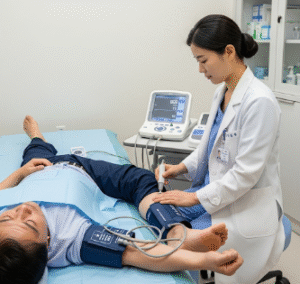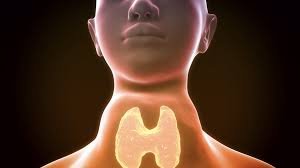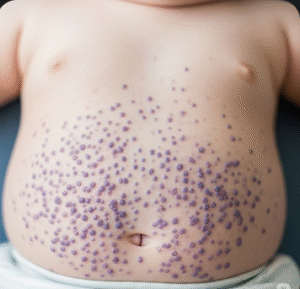Overview
Hand, Foot and Mouth Disease (HFMD) is a contagious viral infection that primarily affects young children. In Korea, HFMD is commonly observed in childcare settings, especially during spring and summer months. While usually mild, timely medical care and hygiene practices are important to prevent complications and reduce transmission.
What is Hand, Foot and Mouth Disease?
HFMD is caused by viruses from the enterovirus family, most commonly Coxsackievirus A16 and Enterovirus 71. It primarily affects children under 5 years old but can occasionally occur in older children and adults. The disease typically causes fever, sores in the mouth, and a rash on the hands, feet, and sometimes the buttocks.
Symptoms
- Fever and malaise
- Painful sores or ulcers in the mouth
- Red spots or blisters on hands, feet, and sometimes the buttocks
- Loss of appetite
- Irritability in young children
- Sore throat
- Fatigue
Causes
HFMD is caused by viral infection transmitted through:
- Direct contact with saliva, nasal secretions, or fluid from blisters
- Contact with contaminated surfaces or objects
- Respiratory droplets from coughing or sneezing
- Poor hygiene in childcare or school settings
Risk Factors
- Age under 5 years
- Attendance at daycare centers or preschools
- Close contact with infected individuals
- Weak immune system
- Poor hand hygiene
Complications
Although HFMD is generally mild, severe cases can result in:
- Dehydration due to painful mouth sores and reduced fluid intake
- Viral meningitis or encephalitis (rare)
- Secondary bacterial infections from skin lesions
- Nail loss or temporary skin peeling after recovery
Prevention
- Frequent handwashing with soap, especially after diaper changes or contact with sick children
- Disinfecting toys, surfaces, and commonly touched objects
- Avoiding close contact with infected individuals
- Ensuring children stay home while symptomatic
- Educating caregivers and parents about early signs
Treatment Options in Korea
Treatment for HFMD in Korea is primarily supportive, focusing on symptom relief and preventing complications:
- Symptom management:
- Antipyretics such as acetaminophen for fever
- Topical oral gels or rinses for painful mouth sores
- Hydration and nutrition:
- Encouraging fluids and soft foods to prevent dehydration
- Hospital care:
- Severe cases, especially with neurological symptoms or dehydration, are treated in pediatric wards at hospitals like Seoul National University Hospital, Samsung Medical Center, and Asan Medical Center
- Follow-up care:
- Monitoring recovery and ensuring secondary infections are avoided
- Public health measures:
- Korean childcare centers implement hygiene protocols and temporary isolation of affected children to reduce outbreaks
With early recognition and supportive care, HFMD in Korea is usually self-limiting, and most children recover fully within 7–10 days.






